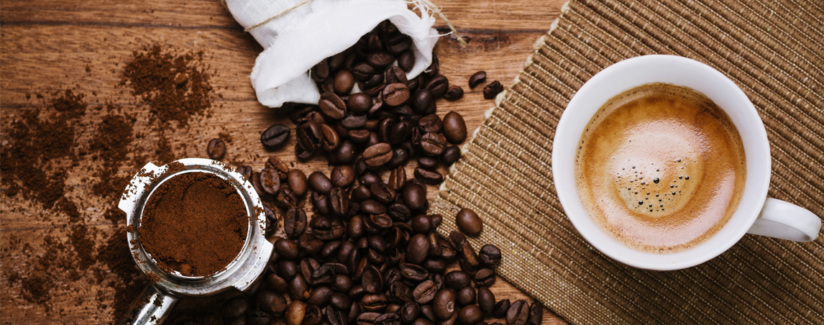
Food Facts: Seven Facts About Coffee and Caffeine
Coffee is an important morning ritual in many cultures around the world. Nearly two-thirds of Americans say they drink at least one cup of coffee every day – and many of those same people wouldn’t dream of starting their day without it. We’ve gathered some facts about your morning cup of joe, thanks to registered dietitian Connie Diekman and the National Coffee Association.
1. All coffee is mountain grown. Coffee beans are the seeds from the coffee plant, which is a small tree that grows in the “Coffee Belt” located in regions around the equator that have adequate temperature and elevation for the plants to thrive. Most coffee plants are grown on the side of mountains, so mechanization of harvesting is not easy. Most producers hire workers to hand strip the ripe fruit, known as cherries, off the trees.
2. Coffee makes a long trip. Green (not yet roasted) coffee beans fill burlap bags and are exported to the countries in which they will be roasted. The United States is not a common place to grow coffee; in fact, the U.S. is the largest importer of green coffee beans in the world.
3. The type of roast determines the caffeine content. Green coffee beans are roasted to bring out the flavor and aroma. Different brands have varying labels for their roast types, but roasts are commonly separated into four categories:
- Light roasts – light brown color, no oil on bean surface, flavor is most distinct, highest caffeine content.
- Medium roasts – medium brown color, no oil on bean surface, balanced flavor, aroma, and acidity, somewhat less caffeine than light roast. Preferred roast in the United States.
- Medium-dark roasts – rich dark color, some oil on bean surface, aroma and flavor emerge and acidity is gone, even less caffeine.
- Dark roasts – dark brown color, oil sheen on bean surface, “origin” flavor of beans is gone and the flavors come from the roasting process, far less caffeine.
4. Coffee isn’t addictive, but caffeine is. Caffeine is a chemical compound that naturally occurs in coffee beans.
“Caffeine is addictive and stopping it abruptly, or even not drinking it on the weekends, can result in caffeine withdrawal headaches,” Diekman explained. “The best approach is to monitor intake during the week to help avoid the withdrawal, sometimes staying overhydrated can help but generally it is about the caffeine.”
A cup of brewed coffee has, on average, 95 mg of caffeine.
5. Coffee may play a role in weight loss. “Caffeine is a stimulant and it can help you feel energized, which can help you control what you eat. With that said, evidence continues to be mixed on if caffeine is the trigger to weight loss or if it is the fact that the stimulation makes it easier to ignore hunger,” she explained.
As a stimulant, caffeine can enhance your athletic performance but monitor to know which amount is best for you, Diekman advises. “Too much can lead to an over-agitated state which can make good performance difficult. Excess caffeine is banned in many sanctioned sports – NCAA for one – so athletes need to know what is allowed before they turn to caffeine to help performance. A better choice would be to fuel and train well.
6. Drinking coffee can provide health benefits. Coffee has been much studied to determine health risks and benefits. “Studies do show the potential for several health benefits but at the same time studies show a cause for limiting intake,” she said. “The fact that coffee is from a bean is likely the connection to the health benefits but since the evidence continues to be mixed it is best to not look to it for prevention of disease and to include it, if you enjoy it, in moderate amounts.”
Adding sugar, milk, flavorings or cream to your coffee increases the calorie count, something to keep in mind as you consider your daily intake.
7. National Coffee Day is September 29.
For many of us, including some of the Best Food Facts team, it is a day we celebrate all year long.
Enjoyed for its flavor, aroma and caffeine content, coffee is one of the world’s favorite beverages.


























